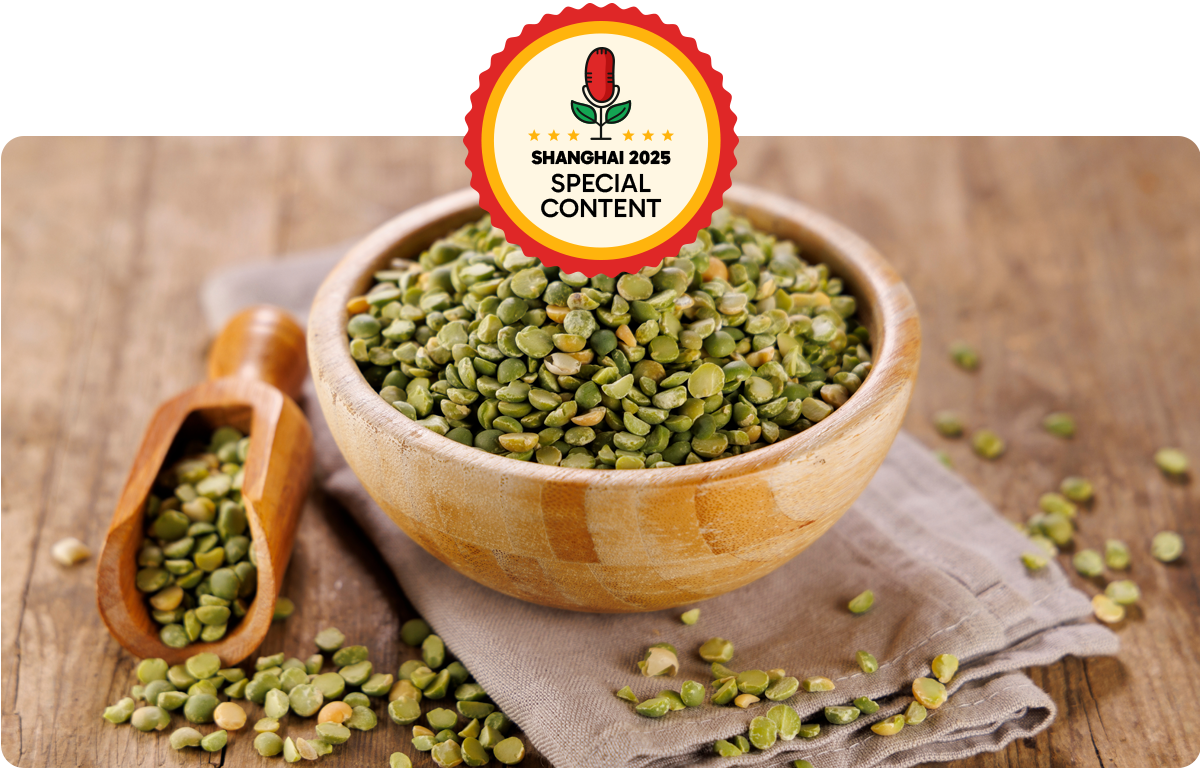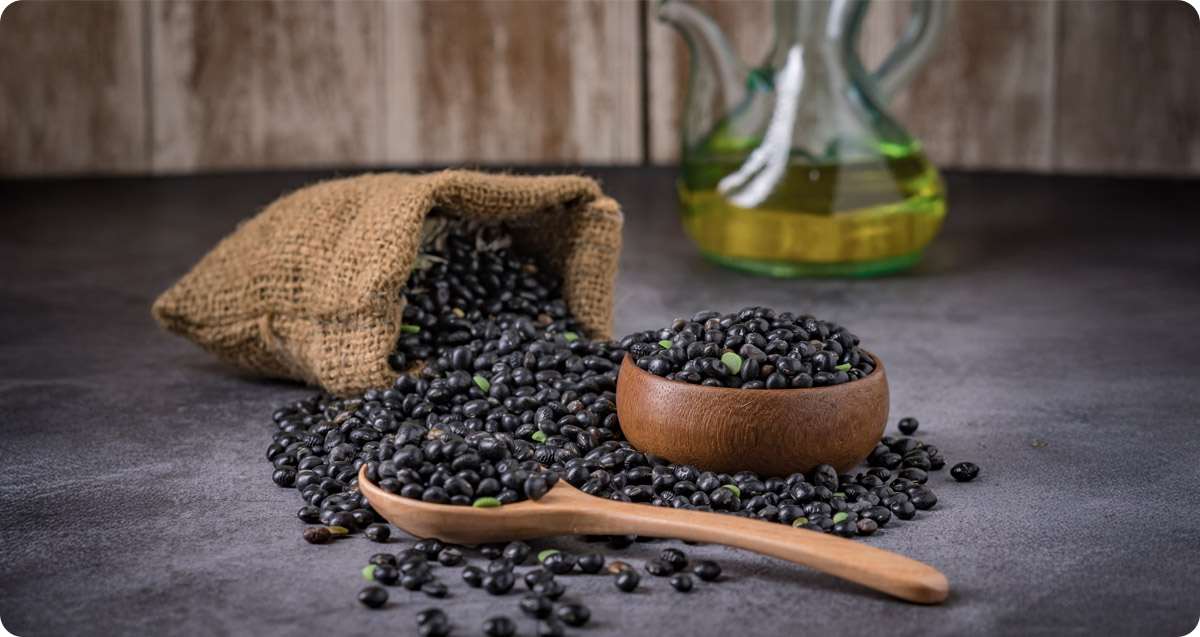June 19, 2025
We sat down with Matías Macera of Desdelsur to discuss the 2025 bean harvest and assess the ups and downs of a tumultuous year in world pulses, including Argentina’s big moves in pea exports to China.


Taking advantage of high tariffs on Canadian exports, Argentina is projected to sell an impressive 170,000 MT of peas to China this season—60% green and 40% yellow—and is working to gain approval to export all different types of beans.
*This article is sponsored by the Shanghai Pulses Congress, taking place on August 19-21, 2025 in Shanghai, China.
This year we're going to have much more volume than last year. I’d say this is going to be a “normal” year – the kind of volumes that we should deliver comfortably.
The cycle started out well with lots of rain in the summer and good organic cover on the ground to keep the moisture in. However, the rain suddenly stopped completely – this affected different commodities like soy and corn in the north and led to a second round of seedings where some of the ground we had earmarked for alubias had to be switched for shorter cycle coloured beans like Cranberries and DRKB. I think we had to alter our estimates by around 30% when the rains finally arrived in the middle of March.
In the end, between 30-35% of all our pulses were seeded late. This left us vulnerable to frosts, but there was only really one small frost around three weeks ago – the effect was minimal and didn't have a big impact.
Brazil has gone from importing between 25-60 KMT of black beans from Argentina, to potentially exporting 80 KMT themselves. This has definitely changed the market for Argentinian producers. That said, this year Brazil has prices at $US750 to Veracruz, and at 2000kg/ha they can’t be making money at that price. So, if prices for soy rise even a little bit, I think that black bean area will drop.
Brazil is also increasing exports of DRKB, although they can't currently sell to the European market because of maximum residue limits (MRLs) for pesticides. I think it's possible this year that Argentina will export more DRKB than the US, which would make it the main exporter around the world.
We've also seen competition in LSKB from China over the last year – they were selling to India, Pakistan, other countries in the Middle East at US$1100/t compared to the cranberries Argentina were selling at US$1600/t due to a lack of product.
China was also offering dark red kidneys but at a high price – between US$1800-2200/t. I would imagine this means that China isn't getting the same yields for its DRKB as its LSKB.

Black bean producers are bracing for a challenging year, since slim margins and new exchange rates could lead to US$300/ha losses. Boosting efficiency and yields will be key for profitability this season.
We had around 45,000 ha of cranberries and DRKB seeded, which is maybe a little bit above normal. I can't give an accurate estimation of final production numbers for the moment, but we should have a reasonable amount to export provided we get decent yields.
Desdelsur projected around 195,000 hectares at Pulses 25, but I think it is probably closer to 200,000 in the end. Average yields look to be around 1000 kg, so we can expect the campaign to finish with around 200 KMT of product available for export.
Our main market has been Mexico who took around 30 KMT, then Venezuela who took 23 KMT. With the combination of bad yields and issues with tariffs importing from the USA, I expect to see more business again from Mexico.
In alubias, I think we're likely to see around 140 KMT of exportable product from the 160,000 ha we planted – a big jump from last year when we had little more than 65 KMT, but again, this is more of a normal amount. The only other competitor in alubia exports is Egypt, who seeded around 200,000 ha between both the winter and summer crops.
It's possible there could be more global supply than demand this year, which could see prices drop a little bit, but costs have also risen in Argentina, so unless farmers can sell at US$1300/t, they're not going to make money. Today's prices are around US$1150/t. If they lose money, farmers might be less keen to plant alubias.
Last year's markets for alubias were unusual, not just the traditional ones like Italy. Algeria is now having difficulties financially and the government is putting out tenders for beans because private buyers can't import any more. Demand has been slower overall for white beans and the market has been waiting for Algeria to come and take some volume.

Margins are still going to be tight this year and with the new floating exchange rate mechanism we're going to be less competitive – if the average black bean producer in Argentina sells products at current international prices, they are going to lose around US$300/ha. Profitability is going to have to come from lowering our costs and becoming more efficient. Increasing our yields is going to be important.
For now, yellow and green peas are the only pulses approved for export to China, and are only approved for exports by container, not bulk. We’re working on getting approval to sell by bulk and export all different types of beans in the future – we know China is a strong buyer, so we're keen to get access to the market.
Argentina is already taking advantage of the high tariffs on Canadian exports to China by selling peas to China. I believe we will reach 170 KMT of pea exports (60% green and 40% yellow) – an impressive number compared to previous years.
It's an interesting crop for Argentina because the central regions like Buenos Aires and Santa Fe have a lot of potential for growing their acres. The seed genetics have improved, and farmers are very keen on having them in the rotation before corn.
Chickpea seedings in the north of Argentina are around 80% completed as of June 13 and should be finished by next week. Around 50% of the chickpea crop is usually planted in Salta, and there will be a little more area this year as there has been progressively less rain the further you move southwards. I think less will be planted in Cordoba, and Tucuman will plant almost nothing. In Córdoba, normally you would see around 65,000 ha, but this year I doubt we'll see more than 30,000 ha.
We projected around 110,000 ha in total for chickpeas at Pulses 25, but I think the reality a month later is that it could be closer to 70-80,000 ha – both because of weather and the prices in the market, which I think could go even lower than they are right now.
Disclaimer: The opinions or views expressed in this publication are those of the authors or quoted persons. They do not purport to reflect the opinions or views of the Global Pulse Confederation or its members.